Learn about the traditional Japanese sashiko pattern yabane 矢羽根 | Sashiko Pattern
The sashiko pattern yabane 矢羽根 or 矢羽 represents arrow feathers, which is also the literal translation of yabane.
矢 ya means “arrow” and 羽 or 羽根 hane means “feather” or “wing.” When put together, the は ha sound becomes soft and turns into ば ba. Thus it is pronounced yabane, not yahane.
The yabane sashiko pattern is one of the most popular traditional patterns. Probably not only because of its smooth looks, but also because of its meaning.
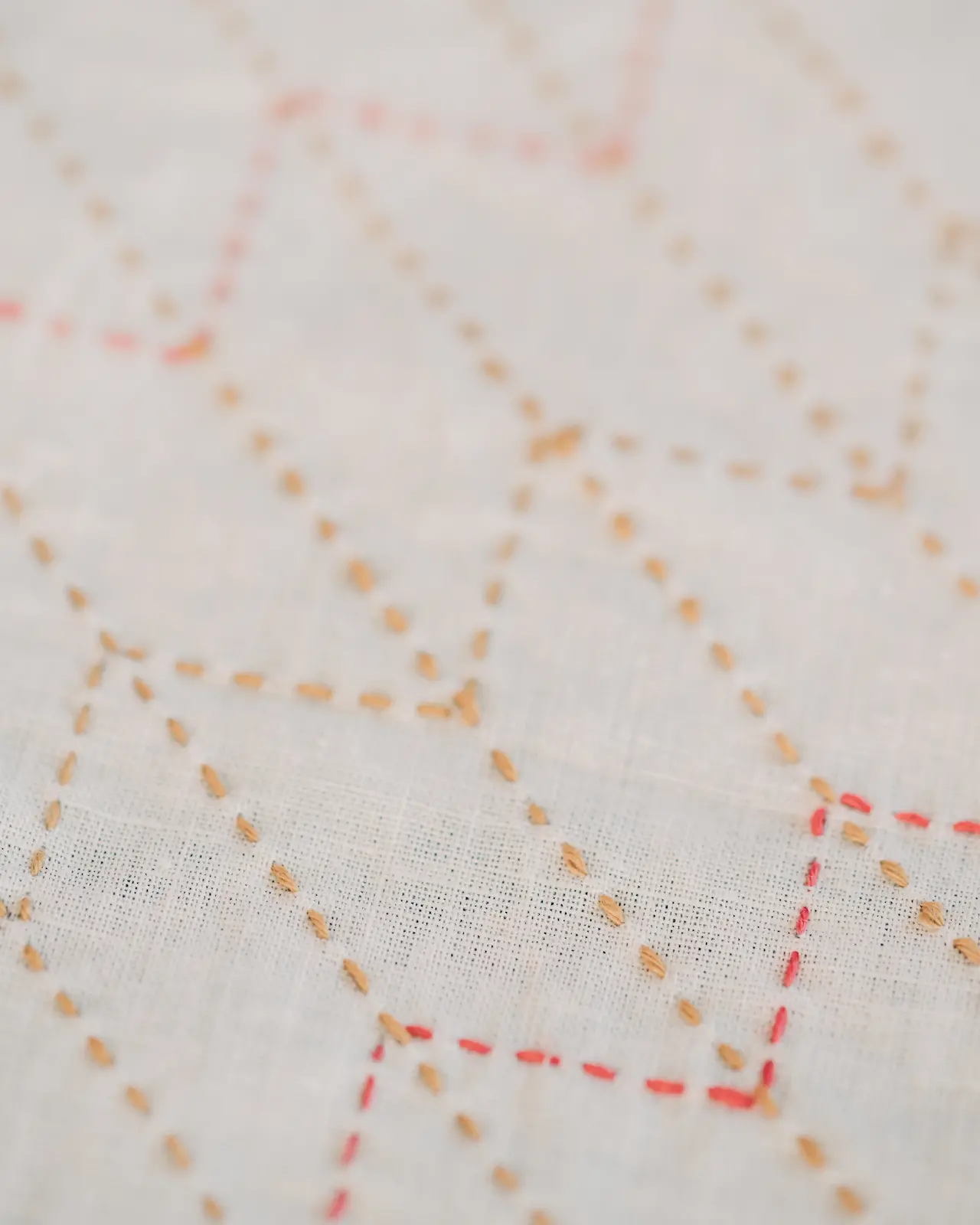
Meaning of the sashiko pattern yabane
The yabane pattern is associated with good fortune.
Arrows, as symbols, have long been used in Japan for spiritual protection and to ward off evil. The motif is linked to the practice of using 破魔矢 hamaya, or "demon-breaking arrows." These arrows are often bought at shrines during New Year celebrations to drive away bad luck and attract good fortune.
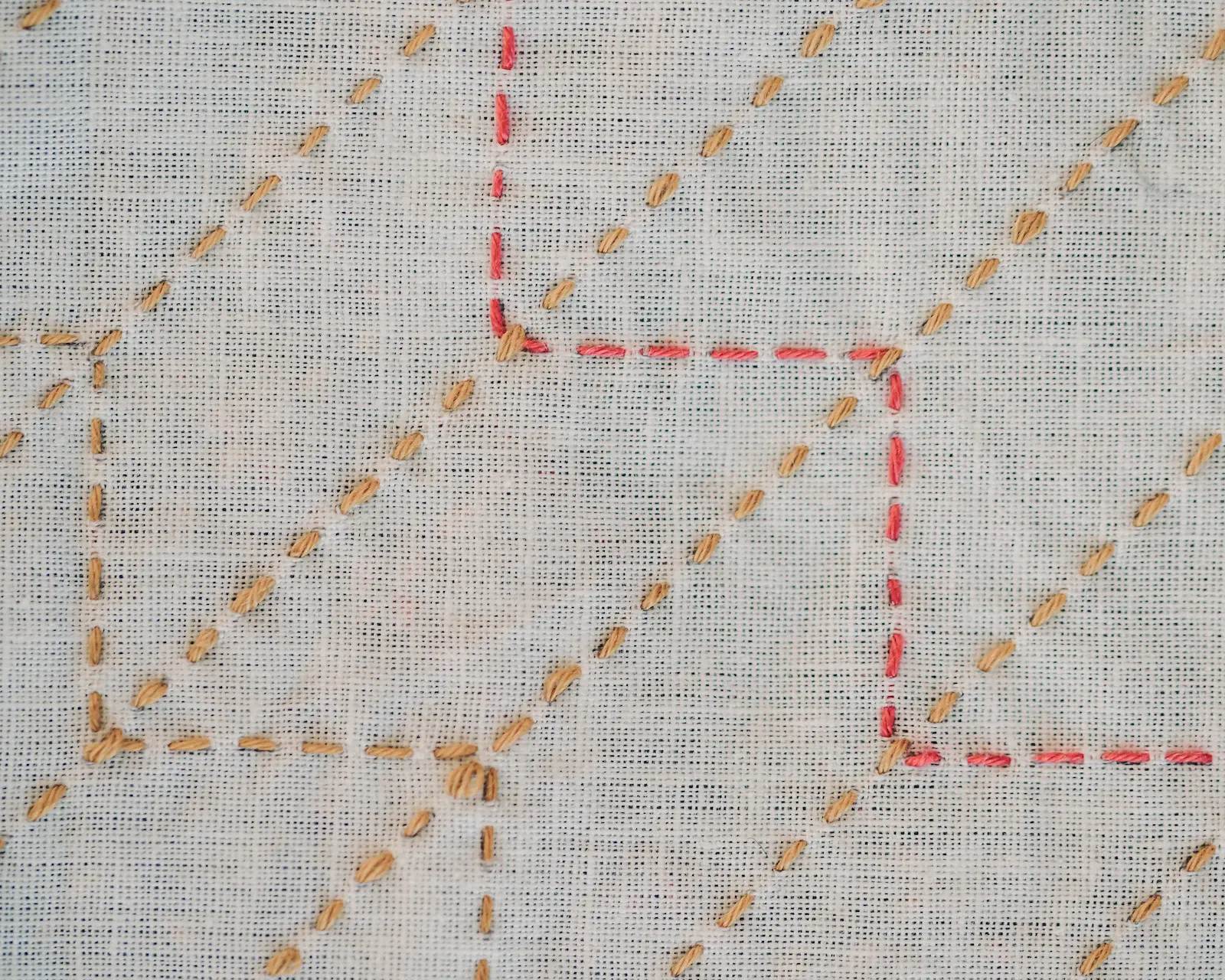
Another meaning springs from the fact that once an arrow is shot, it does not return.
During the Edo period, daughters who were about to marry were often gifted kimonos that had the yabane pattern woven into their fabric. The woven fabric is called yagasuri.
The yagasuri design symbolized the hope that the daughter would not return to her parents’ house after marriage, meaning she was happy in her new home.
Cultural significance of the sashiko pattern yabane
The yabane motif has deep roots in Japan’s history. It was originally popular among samurai in the Momoyama period, and later, in the late Edo period, became a symbol of good fortune.
There are many family crests that feature arrow feathers. For example 三つ重ね矢 mitsukasaneya:
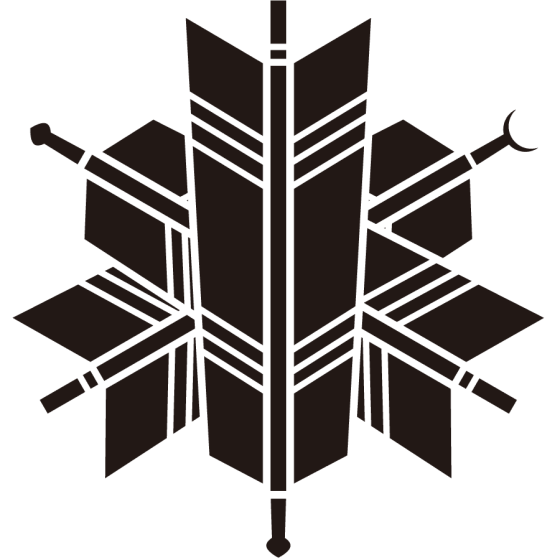
Today, you can encounter the yagasuri pattern at graduation ceremonies and retro kimono fashion. Just like arrows don't turn back, the yabane pattern symbolizes moving forward without looking back.
If you need a little strength to stay on course and achieve your goals, maybe you can draw some encouragement from this pattern. And driving away demons and bad luck – Well, who'd turn that down!?
There is a hitomezashi version of the pattern, too, as you can see on this sampler by Oomae Manami below:
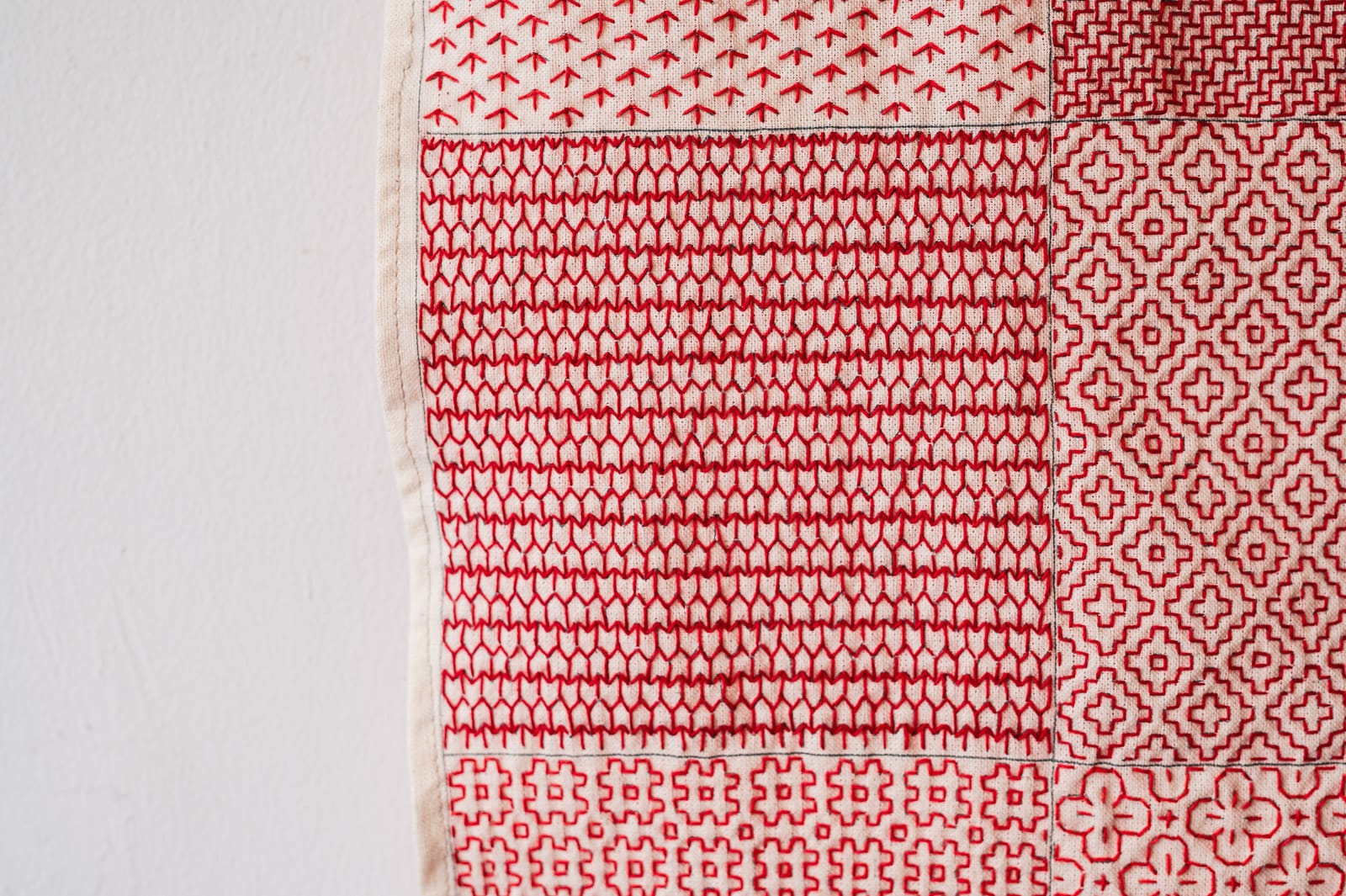
Stitching advice for sashiko pattern yabane
This pattern is a mix of diagonal lines and stair-like shapes. Follow the stairs up and down and finish by connecting the stairs with diagonal lines.
Et voilà! A demon-slaying sashiko pattern protecting you and cheering you on your way towards greatness!
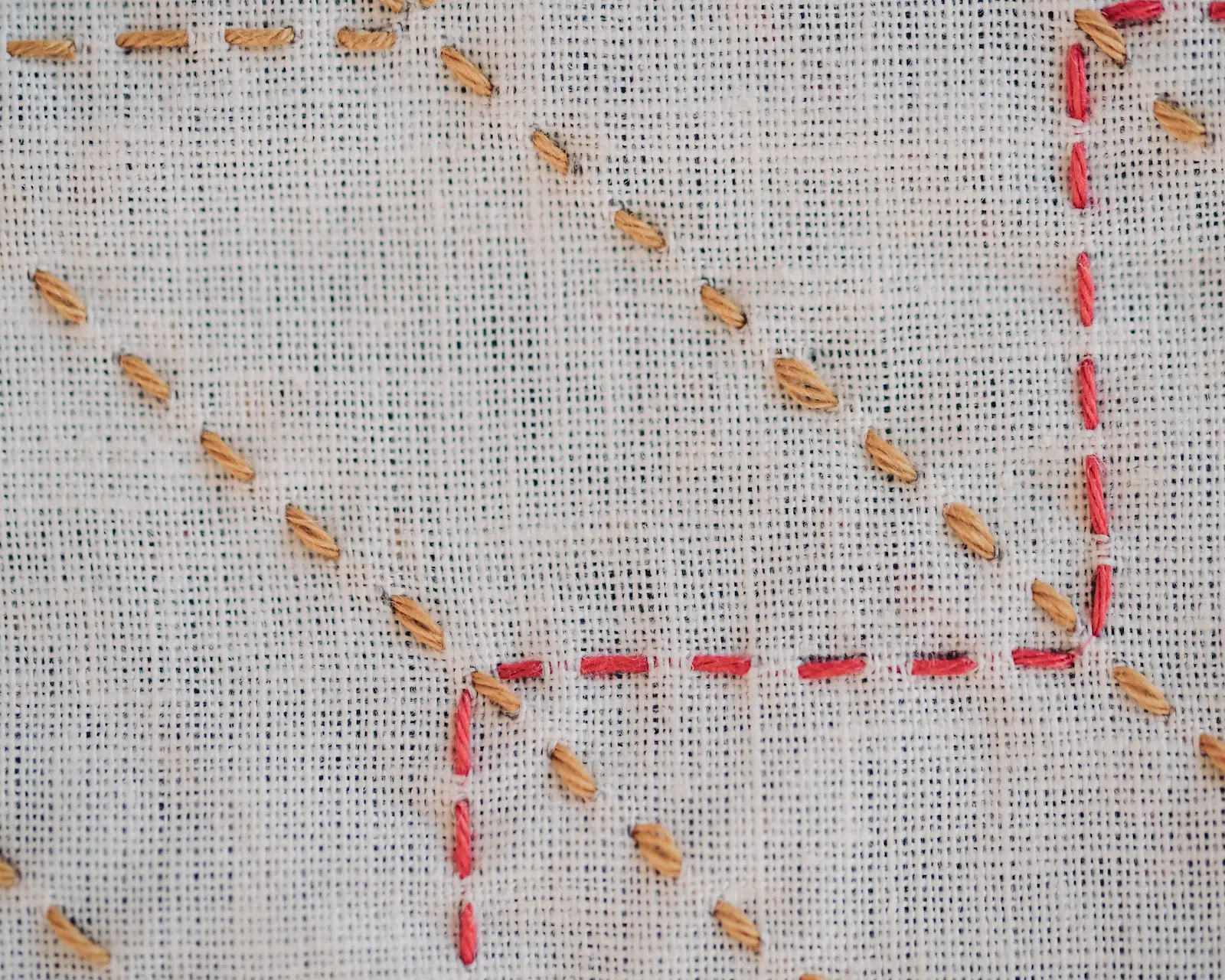


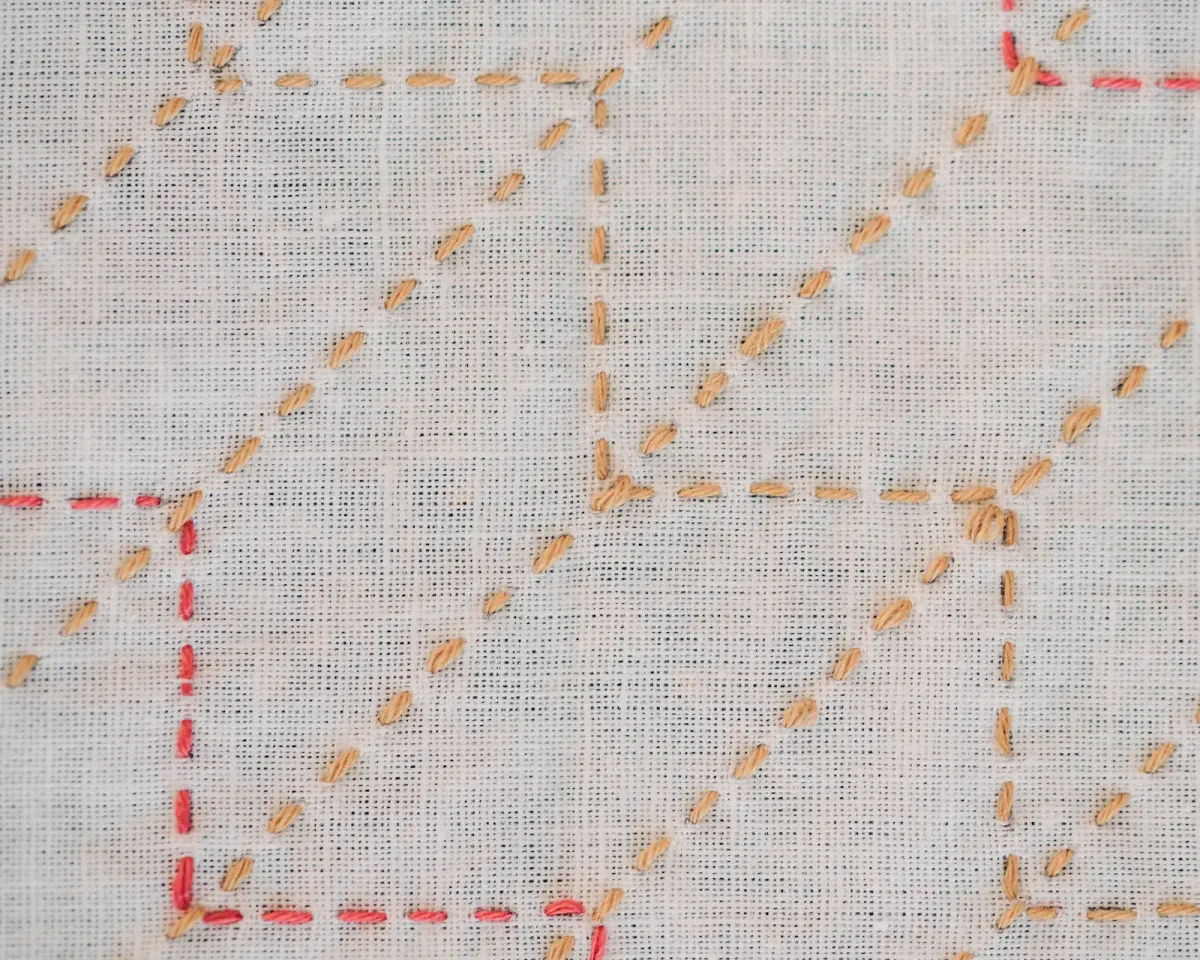

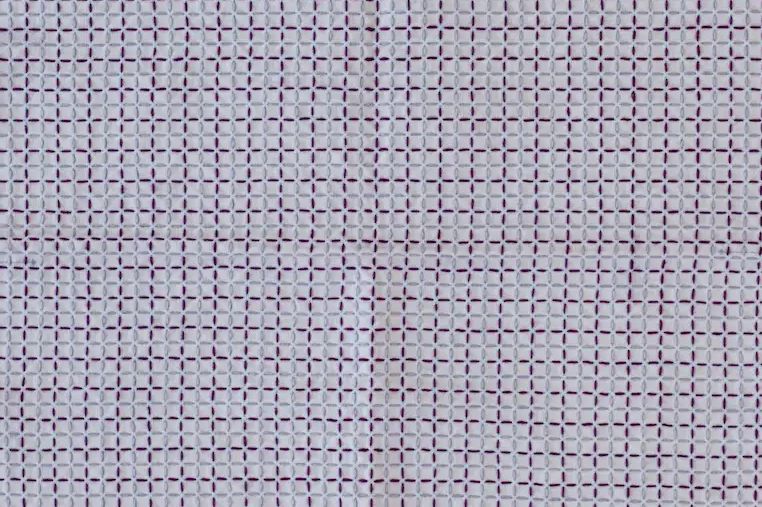
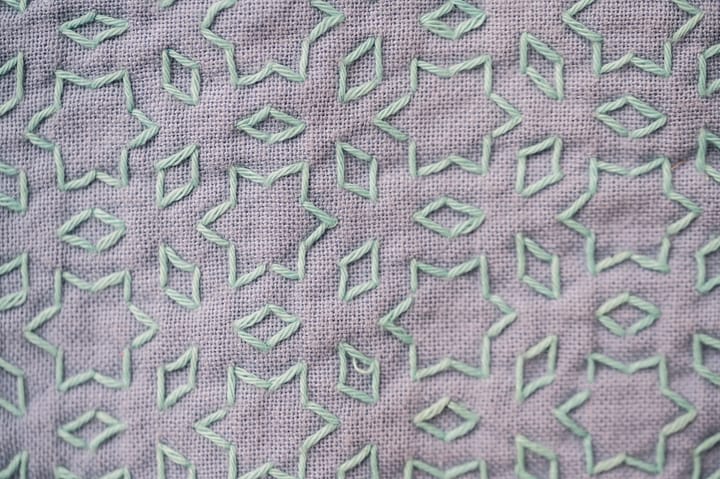
Comments ()